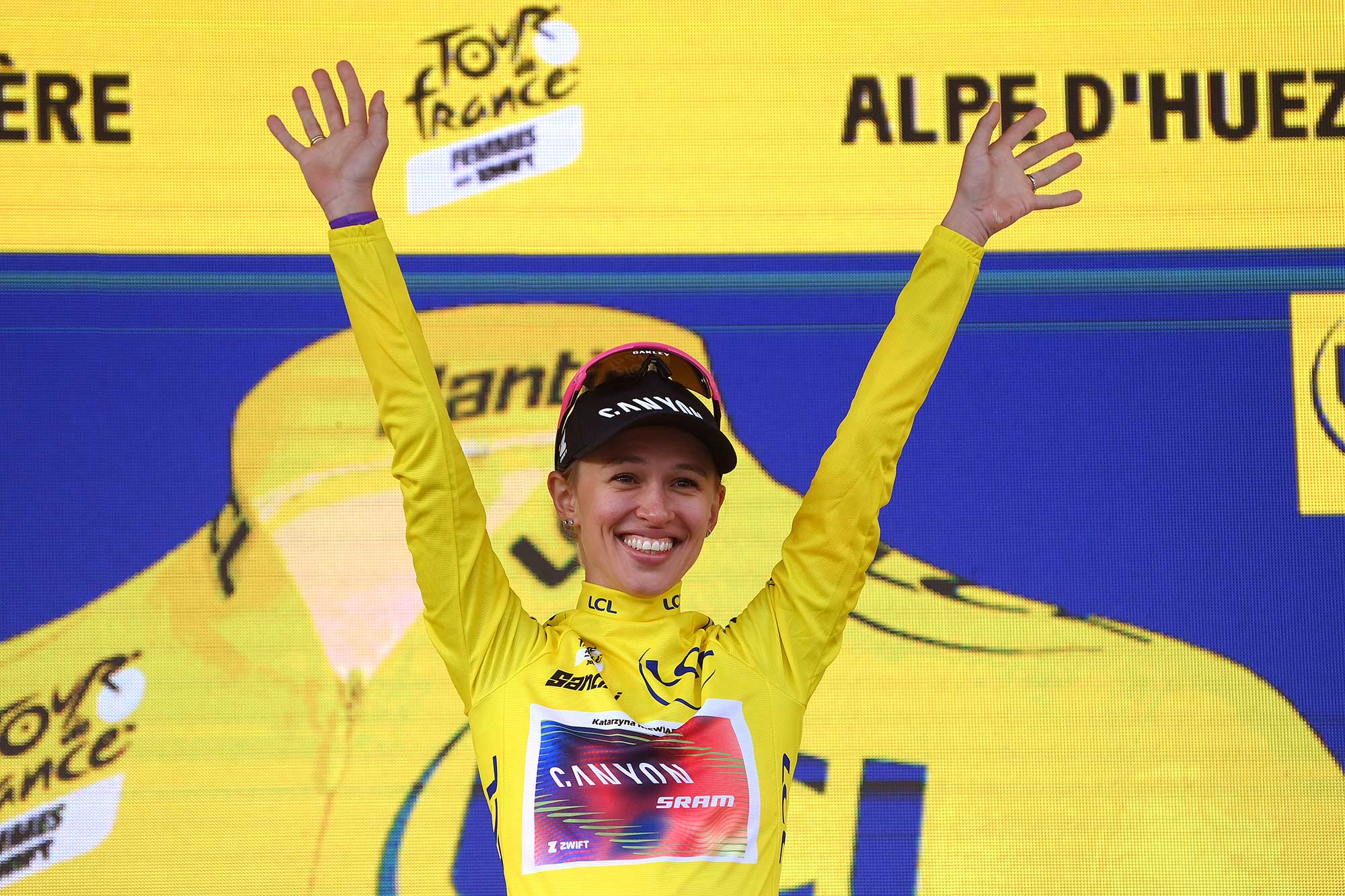
The Tour de France avec Zwift has featured legendary climbs in its closing stages and the trend will continue in 2025, with riders facing the Col de la Madeleine and Col de la Joux Plane on the penultimate and final stages of the nine-day race held from July 26 to August 3.
Standing at 1,700m above sea level and with irregular steep gradients to reach the summit, the Col de la Joux Plane is one of the most brutal of the famous Alpine climbs in France and feared by many amateur and professional riders.
When the riders approach it from Samoëns they will have to manage their energy over the nearly 12km as certain sections will be considerably steeper than the advertised 8.5% average gradient.
Another trend has been to have an overlap of route itineraries between the men's and women's Tour. First with the Super Planche des Belles Filles (in 2022), the Col du Tourmalet (2023), and now Col de La Madeleine for 2025.
On this Queen stage, the celebrated mountain pass starting in the Maurienne Valley will be climbed from the shorter but steeper side. The men's peloton will have raced up en route to the Col de la Loze just over a week earlier.
The Col de la Madeleine is a mainstay in the Tour de France, having been climbed 25 times during the men's event since it was first visited in 1969.
La Madeleine also featured in previous incarnations of the women’s Tour de France, notably in 2002 when the climb was scaled during a 134km stage 7 from Aix les Bains to Courchevel - and then again the following day's 113km stage 8 from Courchevel en route to Vaujany via the Col de Glandon.
The good news for women who would like to emulate their cycling heroines is that they too can test themselves on the Col de la Madeleine on closed roads.
Stage 8 - Chambéry to Saint-Francois-Longchamp, will be the inaugural Etape du Tour Femmes where amateurs can ride this stage on August 2 before the professional women race on the route later that day.
La Flèche Hexagone
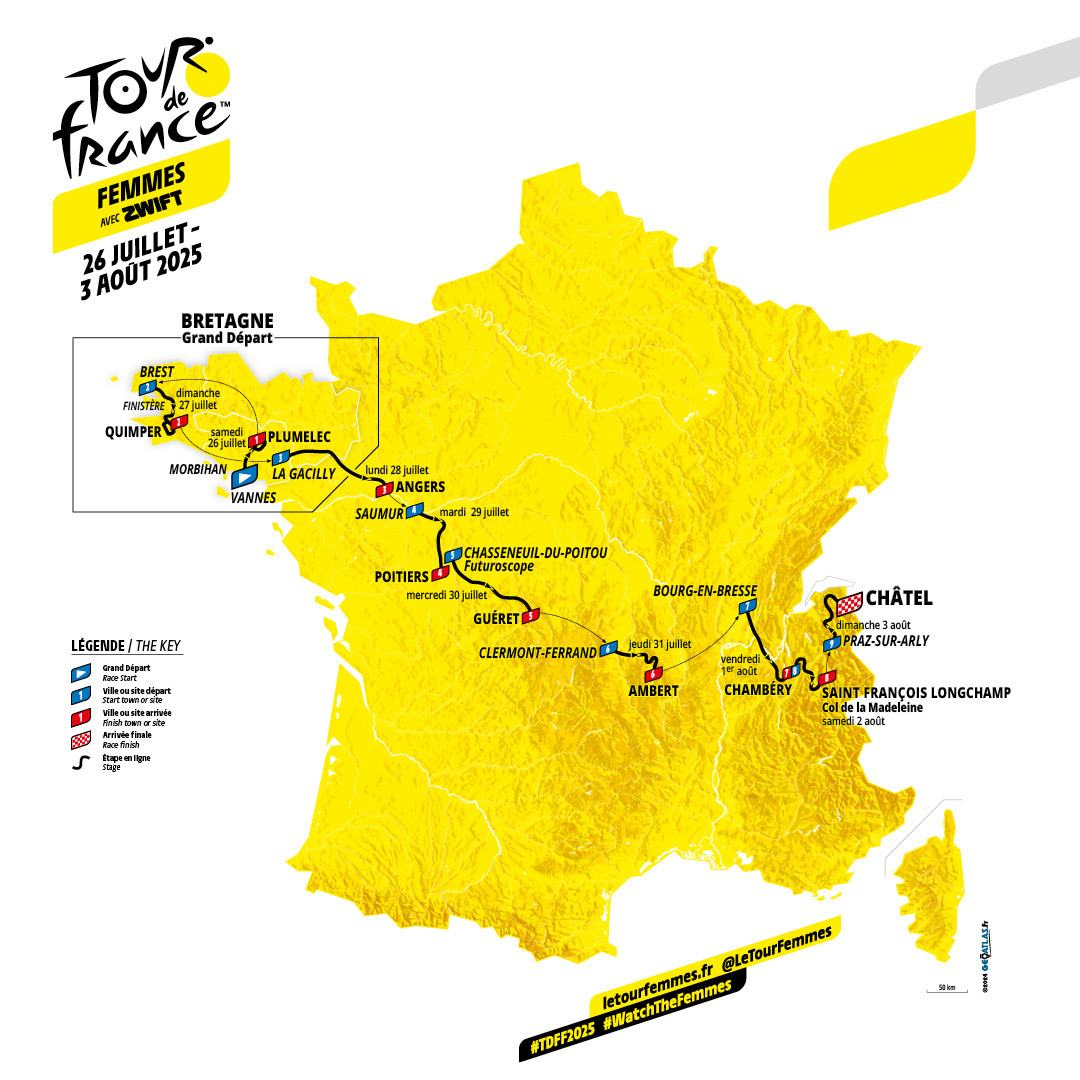
The 2025 Tour de France Femmes route follows a diagonal line through the Hexagon of France, as the women's peloton travels its way 1,165km from Brittany, in the northwest, to the Savoy in the southeast over nine days.
Although the route stays firmly within mainland France, the conclusion of the Tour will be a stone's throw from Switzerland in Châtel, after one of the final GC-contender battles over the Col de la Joux Plane.
With a testing start to the nine-day stage race over punchy climbs in Brittany, including a triple ascension of the Côte de Cadoudal on stage 1, and a gradual increase in the intensity of the climbs from stage 5, the 2025 edition will make for a challenging diagonal line to follow through the Hexagon with 17,240m of climbing.
Cyclingnews highlights some of the key climbs for fans to watch the race be it through riding there, at the roadside, or from the comfort of your armchair as the the top riders in the world race in pursuit of the yellow jersey.
Côte de Cadoudal
- Stage 1
- 1.7km at 6.2%
- 49.5km, 65km, and 79km marks
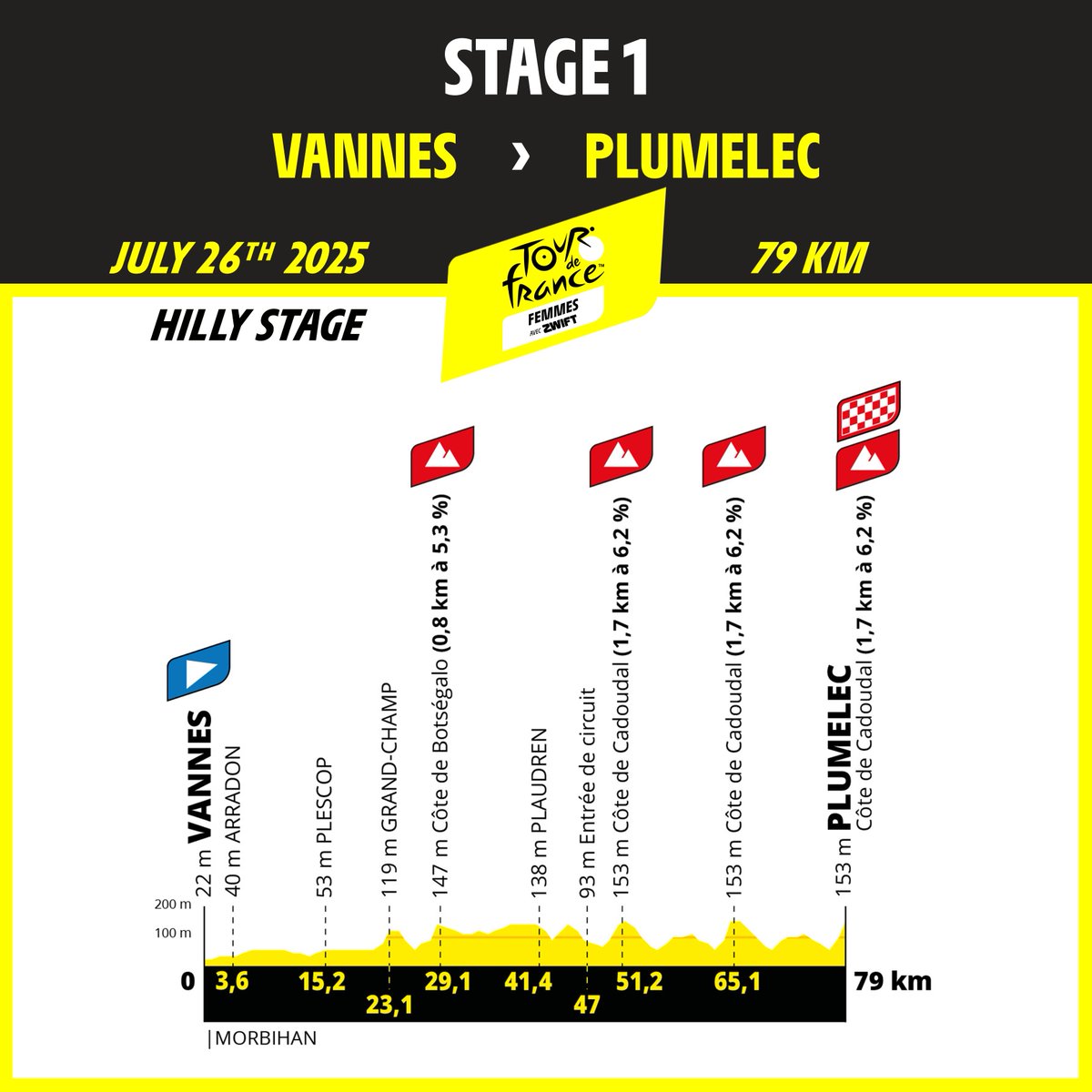
The peloton will crest the Côte de Cadoudal three times on a loop right before the finish at Plumelec.
This stage would suit a punchy rider, and this climb is important because it offers the first opportunity for a rider to take the yellow jersey and a chance for GC contenders to set out their intentions.
It was on this course in 2016 that Anna van der Breggen won the European title ahead of Kasia Niewiadoma and Elisa Longo Borghini.
Côte de Locronan
- Stage 2
- 0.8km at 8.9%
- 67.7mark (of 110km)
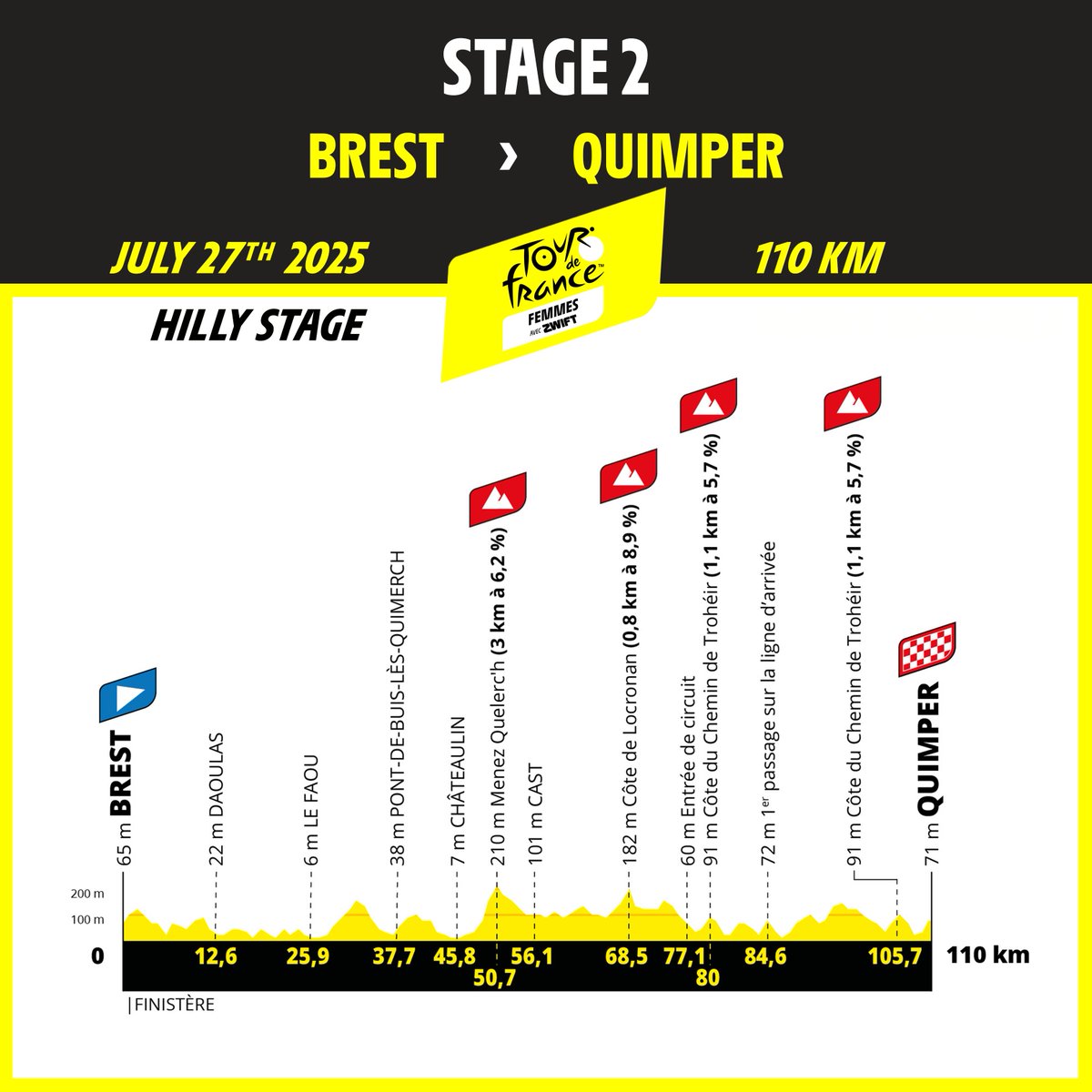
ASO have described stage 2 as flat, however, the route offers some sharp pitches that will test the peloton's sprinters. Côte de Locronan is the steepest ramp of five climbs littered across a lumpy course.
Shortly after this ascent, the race concludes with a tough circuit to be tackled twice before the climb up to Quimper.
This has the same finish as when the stage finished here in 2018 and was won by Peter Sagan.
Col du Béal
- Stage 6
- 10.2km at 5.6%
- 79km mark (of 124km)
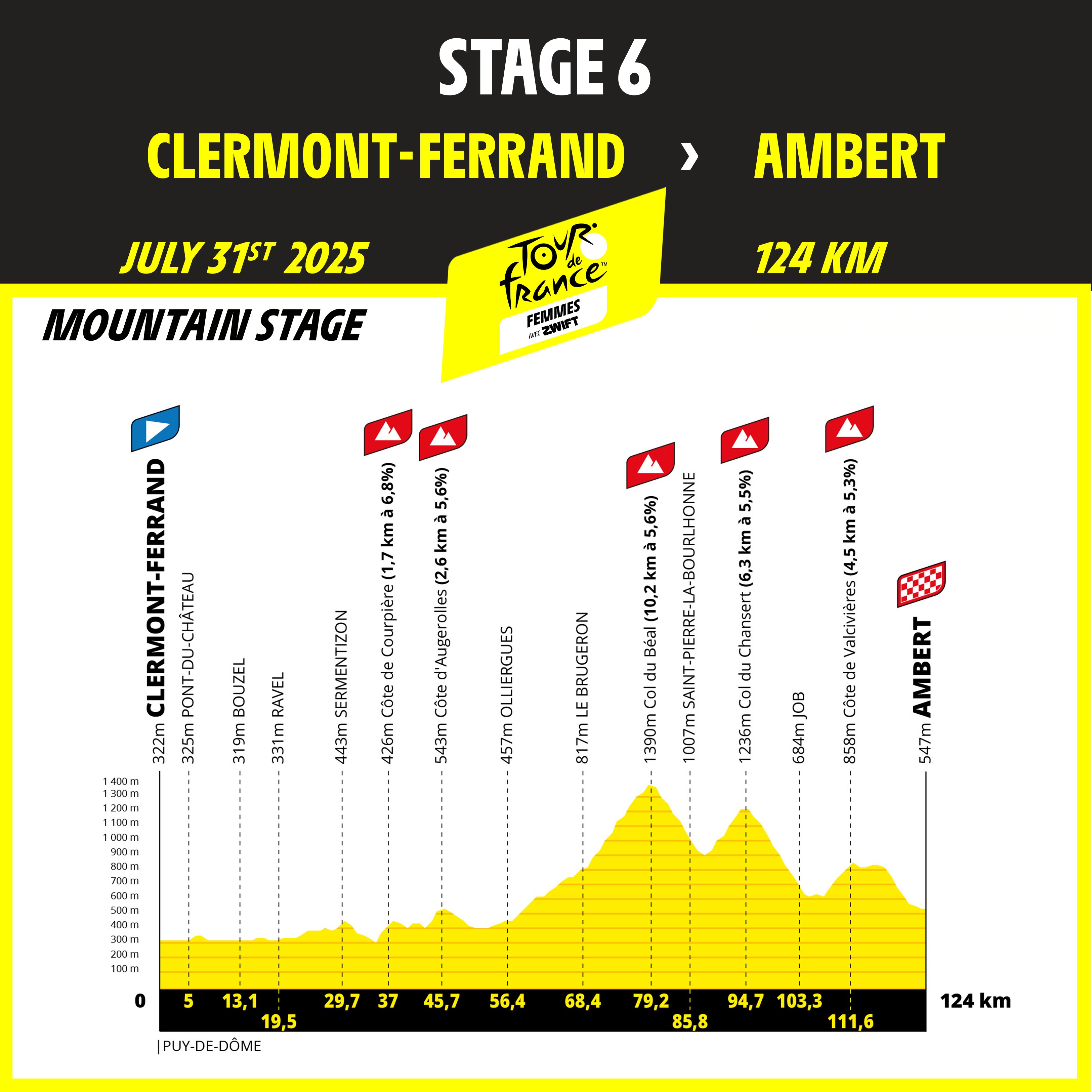
After the long previous stage 5 where the climbing began with a medium mountain day of racing, the theme continues on stage 6 which starts in Clermont-Ferrand.
Col du Béal is the third of five accents on this stage, with this being the main difficulty in a quintuple set of medium-mountain climbs through the spectacular volcanic region of Puy de Dôme.
The ascent is 10.2km and the longest climb of the race up until this point, although the ascents become much more challenging in the later stages.
With the Col du Chansert and Côte de Valcivières, shortly after the Col du Béal, this is a day where a significant selection will likely occur and the race for the yellow jersey will truly begin.
Col du Granier
- Stage 7
- 9km at 5.5%
- 142km mark (of 160km)
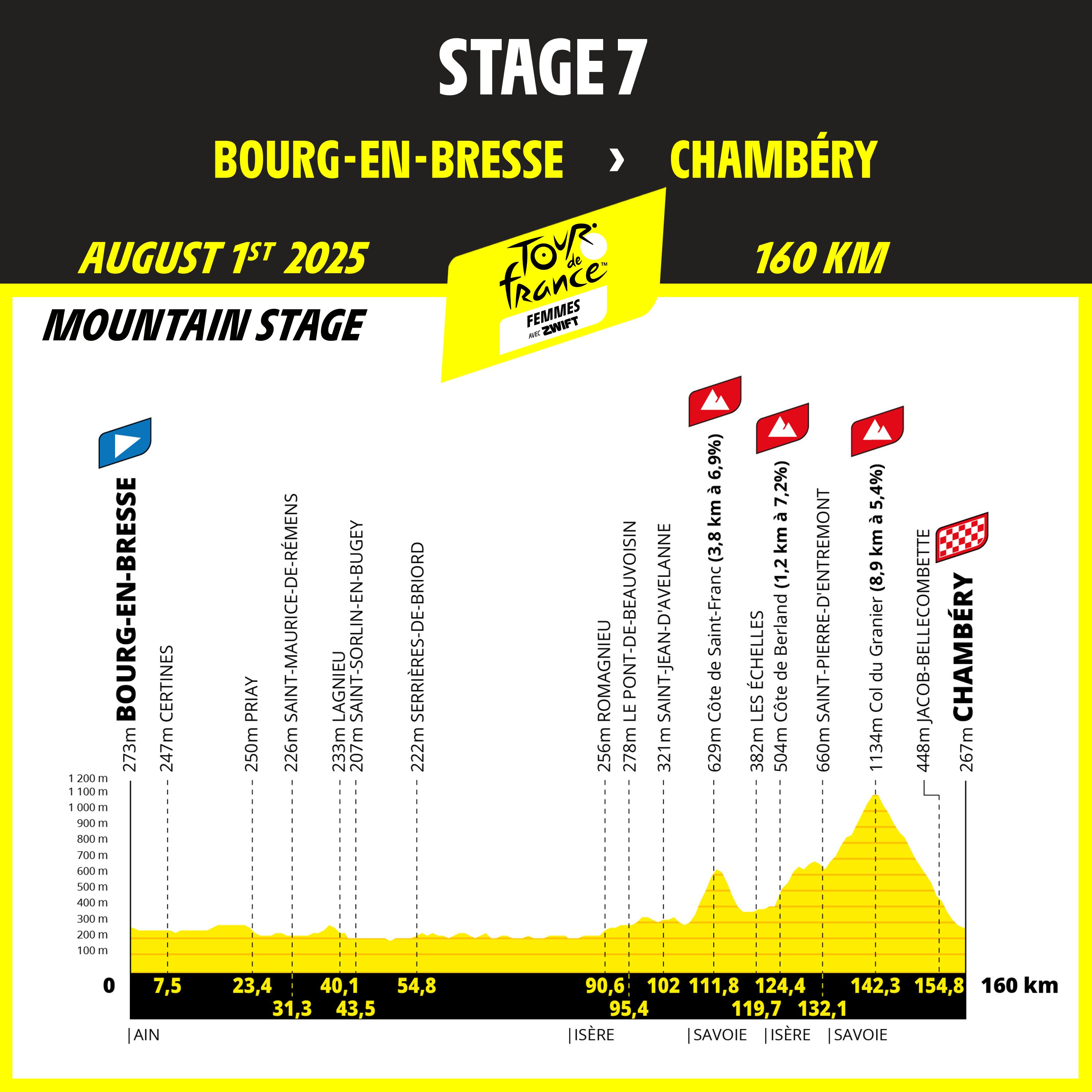
After a flat first half of the stage, starting from Bourg-en-Bresse, a Tour de France host town on four occasions in the last 10 years, the riders reach their first Alpine pass, situated in the Chartreuse Valley with beautiful views over the Lac du Bourget as the peloton negotiates a technical descent to Chambéry.
This town was the setting for the World Road Race Championships in which Jeannie Longo broke away from Maria Canins and Catharine Marsal on the nearby Montagnole climb, to seal her fourth consecutive rainbow jersey - a record that still stands today.
The Col du Granier will offer the peloton its major ascent at nearly 9km, it will be a place for the GC contenders to attempt to gain time (and to not lose time) ahead of the finale back-to-back high mountain stages.
Col de Plainpalais
- Stage 8
- 13km at 6%
- 13km mark (of 112km)
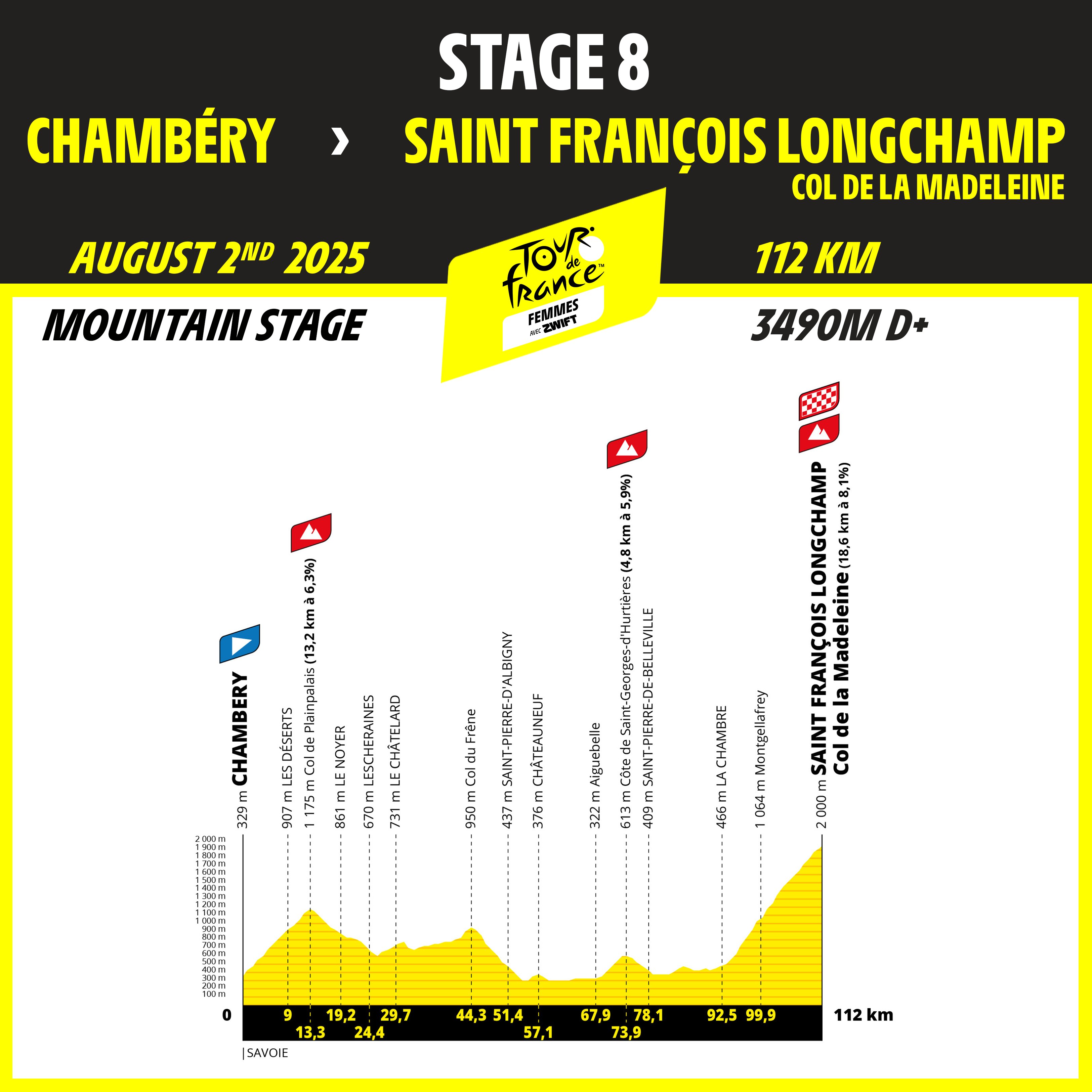
The peloton reaches the Queen stage on the eighth and penultimate day of racing at the Tour de France Femmes.
This day of racing will offer the greatest amount of climbing in this year’s edition of the event. The peloton will face an uphill ride from the gun with a climb over the Col de Plainpalais that makes up the first 13km of the 112km race.
Although the gradient will be steady, this is just the hors d'oeuvre of a big day of racing that includes a climb over Côte de Saint-Georges-d'Hurtières en route to the final ascent of the Col de la Madeleine.
Col de la Madeleine
- Stage 8
- 18.6km at 8.1%
- 112km (of 112km)
As the riders snake through the Massif des Bauges to reach the La Chambre, the GC contenders will be planning their attack to the summit finish in the village of Saint-Francois-Longchamp.
During this Queen stage 8, the GC contenders could win - or lose - this race over the final 18km as they ascend the famed slopes of the Col de la Madeleine.
Col de la Madeleine will bring the peloton to 2,000 metres of elevation gain and the highest point of the Tour de France Femmes.
Col de Joux Plane
- Stage 9
- 12km at 8.5%
- 66km (of 124km)
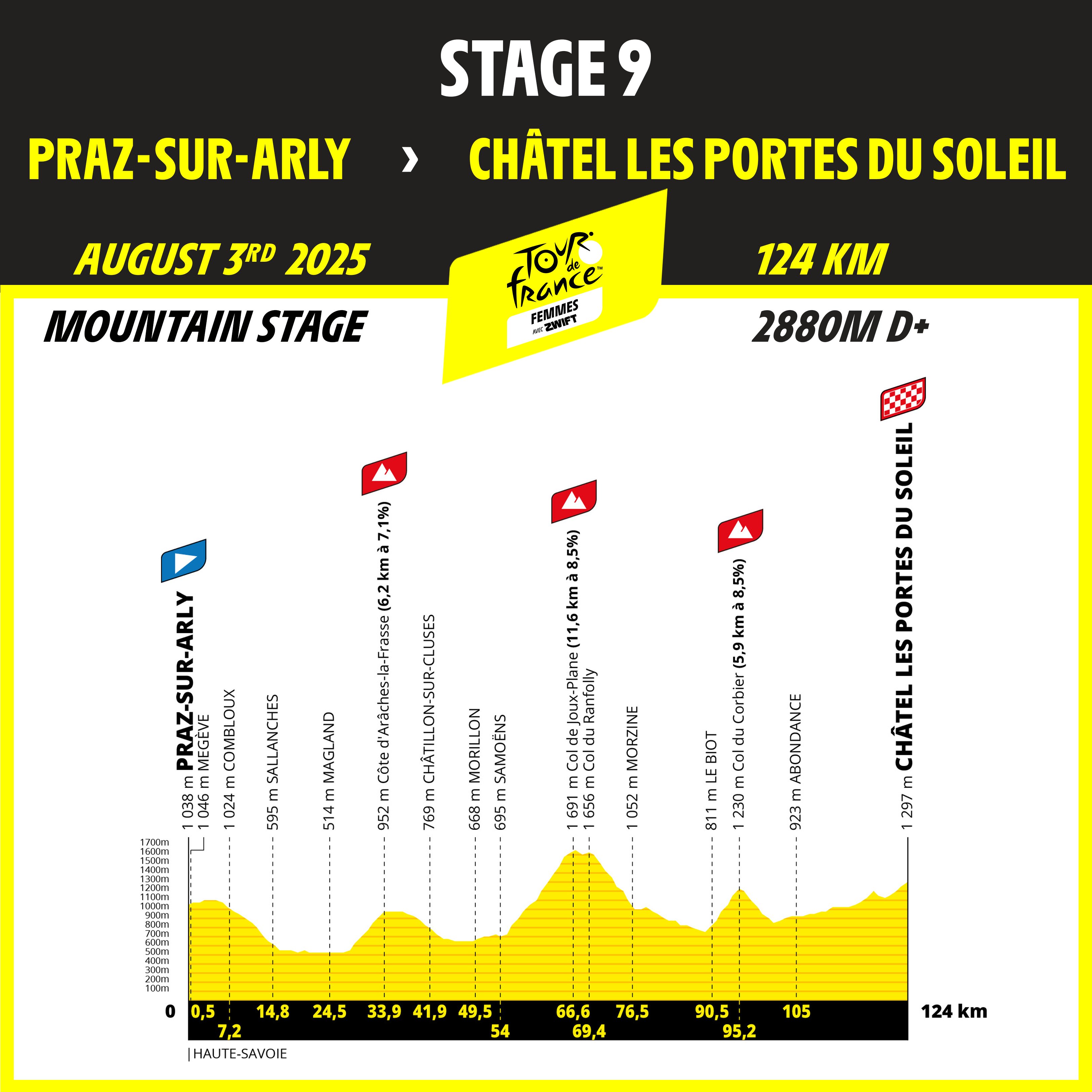
With irregular gradients and sections of more than 12%, the Col de Joux Plane is arguably the hardest climb of the whole race.
Some may say that because it's so far from the finish line it wouldn't make much difference to the GC standings. However, as we've seen in previous editions of the Tour de France Femmes where the last stage includes multiple daunting mid-race mountain passes before the grand finale ascent, this could be a breaking point.
The peloton also faces the much shorter Col du Corbier soon afterward the Col de Joux Plane, and a then a gradual climb up to Châtel as well as the undulations when passing through the Portes du Soleil area.
These elements combined can change the race, particularly for a GC contender who has lost a bit of time and goes on the attack early.
In 2024, Demi Vollering attacked on the mid-stage Col du Glandon which led to her efforts to win atop Alpe d'Huez, but it was not enough to hold off Kasia Niewiadoma, who won the overall title by just four seconds.
There is no disputing that this was one of the most dramatic moments of racing in 2024, and with back-to-back high mountain stages on tap for next year's race, fans could be treated to another showdown among the best climbers in the world on the roads - Route de la Bechigne - that leads into Châtel.
Route de la Bechigne, Châtel
- Stage 9
- 124km mark
Châtel is a quaint village at the top of the Val d’Abondance and serves as one of the base camps for the expansive Franco-Swiss Portes du Soleil ski region.
It borders the Swiss canton of Valais, and is accessible via the Pas de Morgins (1,374m), a pass well-known to cyclists, the village has hosted the Tour de France twice: 1975 and 2022.
The 2025 edition of the Tour de France Femmes will climb into Châtel from further west and towards the finish of the finale stage 9, starting from Pré la Joux.
The stage will pass through what race director Marion Rousse called the "leg-breaking Route de la Bechigne" and into Châtel, where the overall champion will be crowned.







